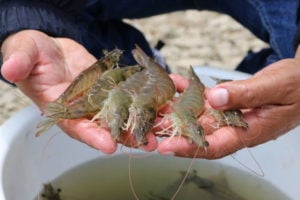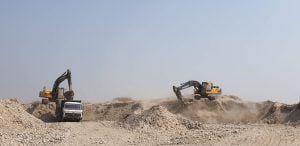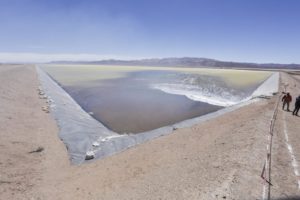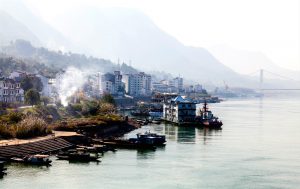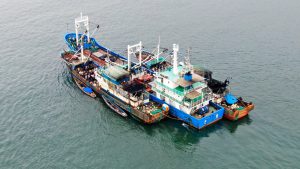Due to climate change, mountain glaciers worldwide lost mass at an average rate of 220 gigatons (Gt) per year between 2006 and 2015, equivalent to 0.61 millimetres per year of sea level rise. In nearly all high mountain areas around the world, the depth, extent and duration of snow cover have declined over recent decades, especially at lower elevations. Permafrost thaw and glacier retreat have decreased the stability of high-mountain slopes.
These changes to the cryosphere and associated hydrological changes have already impacted terrestrial and freshwater species and ecosystems in high mountain and polar regions. Land previously covered by ice has appeared, snow cover has changed, and permafrost is thawing, says the special report on oceans and cryosphere launched by the UN’s Intergovernmental Panel on Climate Change (IPCC) on Wednesday.
Over the last century some species of plants and animals have increased in abundance, shifted their range, and established in new areas as glaciers receded and the snow-free season lengthened. Together with warming, these changes have increased the number of species in high mountains, as lower-elevation species migrate up the slope. Some cold-adapted or snow-dependent species have declined in abundance, increasing their risk of extinction, notably on mountain summits. In polar and mountain regions, many species have altered seasonal activities especially in late winter and spring.
Since the mid-20th century, the shrinking cryosphere in the Arctic and high-mountain areas has led to predominantly negative impacts on food security, water resources, water quality, livelihoods, health and well-being, infrastructure, transportation, tourism and recreation, as well as culture of human societies, particularly for Indigenous peoples.
Glacier retreat and snow cover changes have contributed to localised declines in agricultural yields in some high mountain regions, including the Hindu Kush Himalayas and the tropical Andes. In some high-mountain areas, water quality may have been affected by contaminants, particularly mercury, released from melting glaciers and thawing permafrost.
Importantly, the IPCC confirms that changes in snow and glaciers have affected the amount and seasonality of runoff and water resources in snow dominated and glacier-fed river basins.
Glaciers to retreat further, faster
Projected glacier mass reductions between 2015 and 2100 (excluding the ice sheets) range from 18% for a low greenhouse gas emissions scenario to 36% for a high emissions scenario. Regions with mostly smaller glaciers, especially in central Europe, Caucasus, northern Asia, Scandinavia, tropical Andes, Mexico, eastern Africa and Indonesia are projected to lose more than 80% of their current ice mass by 2100 if emissions remain high.
Many glaciers are projected to disappear regardless of future emissions.
In high mountain areas, projected decreases in low elevation mean winter snow depth, compared to 1986–2005, are likely to be 10–40% by 2031–2050, regardless of emissions scenario. For 2081–2100, this projected decrease is likely 10–40 % for a low-emission and 50–90% for a high-emissions scenario.
In many high mountain areas, glacier retreat and permafrost thaw are projected to further decrease the stability of slopes, and the number and area of glacier lakes will continue to increase. Floods due to glacier lake outbursts or rain-on-snow, landslides and snow avalanches, are projected to occur also in new locations or different seasons, the scientists warn.
River runoff in snow-dominated or glacier-fed high mountain basins is projected to change regardless of emissions scenario, with increases in average winter runoff and earlier spring peaks. In all emissions scenarios, average annual and summer runoff from glaciers are projected to peak at or before the end of the 21st century – around mid-century in The Hindu Kush Himalayas, followed by a decline in glacier runoff. In regions with little glacier cover such as tropical Andes and European Alps, most glaciers have already passed this peak.
Projected declines in glacier runoff by 2100 in a high-emission scenario may reduce basin runoff by 10% or more in at least one month of the melt season in several large river basins, especially in The Hindu Kush Himalayas during the dry season, say the scientists.
Future land cryosphere changes will continue to alter terrestrial and freshwater ecosystems in high-mountain and polar regions with major shifts in species distributions resulting in changes in ecosystem structure and functioning, and eventual loss of globally unique biodiversity.
Worryingly, the special report says wildfires are projected to increase significantly for the rest of this century across most tundra and boreal regions, and also in some mountain regions.
Hydropower, farming to be hit
Future cryosphere changes on land are projected to affect water resources and their uses, such as hydropower and irrigated agriculture in and downstream of high-mountain areas.
Disaster risks to human settlements and livelihood options in high mountain areas and the Arctic are expected to increase due to future changes in hazards such as floods, fires, landslides, avalanches, unreliable ice and snow conditions, and increased exposure of people and infrastructure. Current engineered risk reduction approaches are projected to be less effective as hazards change in character.
![Where is the water? The Teesta is barely a trickle once it clears the hydropower dams [image by: Jayanta Basu]](https://dialogue.earth/content/uploads/2017/06/DSCN6463-1.jpg)
Himalayas bear the brunt
Among high mountains, the major impact is in the world’s tallest range, the Hindu Kush Himalayas, a term that encompasses the Himalayas, Karakoram, Hindu Kush, Pamir, Tien Shan, Kun Lun, and Hengduan ranges and the high-altitude Tibetan Plateau.
This vast complex of high mountains has the largest reserves of water in the form of ice and snow outside the polar regions, which is why it is called the third pole. It is the source of ten of the largest rivers in Asia, including the Indus, Ganga, Brahmaputra, Mekong and Yangtze. Based on the latest available government data sources and projections, in 2017 the population of the mountain and hills of the Hindu Kush Himalayas was around 240 million people. The total population in the ten major river basins with their headwaters is around 1.9 billion.
What happens to Himalayan glaciers directly affect over two billion people in Asia.
Women the worst affected
Anjal Prakash, a coordinating lead author of this special report, says one of the most striking impacts is on the condition of women who now have to effectively head their households as men are migrating out of the mountains in search of jobs. With springs – the main source of water for most people living in the Himalayas – drying up in large numbers, women now have to spend far more time fetching water as well as farm, sell the farm produce, deal with officialdom and everything else.
![Women in Kapri village Bajura, western Nepal, preparing millet for use after harvest [Image by Nabin Baral]](https://dialogue.earth/content/uploads/2019/01/photos-for-story-two-1.jpg)
No solution but adaptation
The expert says that the mantra in the Hindu Kush Himalayas has to be to adapt, adapt and adapt. “It is very likely that the process of climate change will not be reversed, so the only option is to adapt. There are many ways in which it could be done through policy changes and planning and to create climate resilient infrastructure. However, I would like to focus on lack of coordinated planning.”
Ponting out that the Hindu Kush Himalayas straddle many countries, Prakash says lack of trust between governments “leads to inadequate water management at almost every level in the region. At the national level, water management is marked by short-term approach, with seemingly little attention paid to long-term consequences. At the regional level, there is a huge scope for countries to come together at least on river basin levels to generate scientific knowledge in a coordinated fashion and exercise joint policies for conservation of trans-boundary aquifer systems. This approach could benefit from system-based thinking which is lacking in present approach for water management in the region. At the local level, building community’s capacity to adapt and making infrastructure resilient is the key.”
At the launch of the IPCC special report, Prakash’s words were echoed by Panmao Zhai, co-chair of IPCC’s Working Group 1, the group of experts in atmospheric sciences. “Integrated management and transboundary cooperation provide opportunity to deal with effects” of climate change in high mountain regions, he said.
Responding to the report, Aisha Khan, the Executive Director for Civil Society Coalition for Climate Change and CEO of Mountain and Glacier Organization in Pakistan said, “Acknowledging differences and unresolved disputes, Pakistan and India must find a way to strengthen environmental cooperation and build ecological integrity to make South Asia resilient. The two countries share water sources, air sheds and ecological corridors. None of these operate on man made rules and need to flow freely across boundaries to benefit upstream and downstream communities. In addition to the special report by the IPCC with dire warnings we also need to pay heed to the World Bank report on South Asia’s Hotspots which puts at risk the lives of 800 million people. The massive displacement and outmigration numbers will create a climate refugee problem of monumental proportions. This will have a transboundary spillover effect that has a strong probability of creating a humanitarian crisis as well as rocking peace and stability in an already volatile region.”
She added, “South Asia needs support to build its adaptive resilience but it also needs to move towards integrated planning, sharing knowledge and information and developing collaborative pathways to development looking at the future from a regional perspective and keeping wellbeing of people at the heart of all decision making.”
Erum Sattar, an expert on the Pakistan section of the Hindu Kush Himalayas, said, “The report should serve as a wake-up call to Pakistani decision-makers. Decision-makers should immediately make the connection of the report’s dire assessments to the particular and extreme vulnerability the country faces. In essence, an estimated 60% of Pakistan’s water supplies in the Indus river system come from the annual melting of glaciers. With a dramatically warming global climate, a country that relies for the bulk of its fresh river waters on glaciers should begin to make drastic adjustments…Furthermore, the country must fundamentally question its commitment to making big expensive storage infrastructure. With permanently reduced water supplies, it seems very likely that people won’t gain a long-term margin of safety from extremely costly infrastructure – in essence because there’ll be no water to capture and store in it… Taken together, Pakistan needs to dramatically change the course and direction of its plans to meet its goal of water security.”
![<p>Lake Thorthormi, in north-west Bhutan, is one of the country’s most dangerous glacial lakes [image courtesy: NCHM, Bhutan]</p>](https://dialogue.earth/content/uploads/2019/04/Thorthomi-Lake-1-1.jpg)
